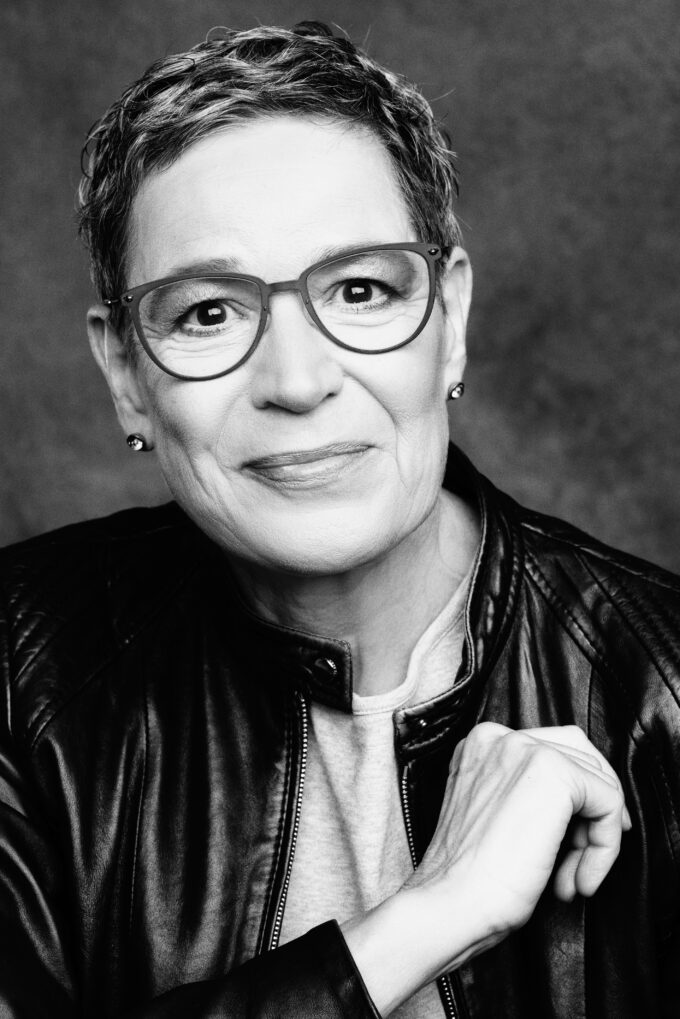
How elixir of longevity will alter life as we know it
Aging is now seen as a modifiable biological process. Longevity science is reshaping healthcare, careers, and society for longer, healthier lives....
Audio available

by Simone Menne Published March 30, 2023 in Governance • 9 min read • 
If you’ve ever attended an annual general meeting, the likelihood is that the supervisory board sitting on the stage was made up of older men in suits. Yet as investors’ calls for greater board diversity grow louder, one overlooked aspect is now coming under the spotlight: age.
Over the past 20 years, boards have increasingly had to handle new topics – from ESG to cybersecurity and digitalization – and are expected to have more controversial discussions that could lead to constructive solutions. If everybody on the board looks – and thinks – the same, it won’t be able to fulfill its mandate to confront the challenges of the future.
There are some positive trends. The 2022 US Spencer Stuart Board Index found that many boards were considering how to achieve the right balance between youth and experience. Just over a third of new board directors appointed to companies in the S&P 500 are serving on their first public company board, and directors aged under 50 account for 18% of new directors. However, they still only account for 6% of all directors, and the average age of new directors, at 57.3 years, is actually slightly higher than a decade ago.
Studies have shown that more diverse boards can improve performance and even help prevent misconduct
This reflects my own experience. I currently serve on four supervisory boards – two in Germany and two in the US – and not a single director is under 40.
In Germany, age diversity is less of a topic. Many boards still prioritize the “feel good factor” and will hire directors who harmonize with the rest of the board rather than pushing for more diversity of background, experience, and perspectives. This has led to a lot of boards being composed of white, heterosexual, west German men. But studies have shown that more diverse boards can improve performance and even help prevent misconduct.
Take the example of mobility. A board made up of baby boomers aged over 60 may believe it is perfectly aspirational to want to own a car. Yet many millennials and Gen Zers reject car ownership and are more interested in alternative forms of mobility. If you exclude these perspectives from your board discussions, you won’t see the problem from all angles and therefore are unlikely to find the right solutions.
Critics of more age diversity on boards are keen to point out that experience is necessary to allow boards to spot and deal with the tricks of management. While this is certainly true, having an age-diverse board shouldn’t prevent this from happening because the nature of diversity means that there should be a balance between experience and youth.
So, what attributes should younger directors bring to the table?
Like every board director, it’s important to bring your own ideas and opinions, but you also need an ability to compromise. Directors need to be capable of putting their own emotions aside to consider the needs of different stakeholders – from shareholders to employees and customers. A background in this kind of decision making is definitely helpful. Building on this, board directors need to be able to listen, to weigh up different perspectives, and be prepared to change their mind.

– Simone Menne
Younger board directors may be hired for their expertise in digital transformation or for fresh perspectives on ESG topics. Nonetheless, they also need to bring a good understanding of the company’s business model, processes, products, and company culture. If you are new to the sector, it can be advantageous to conduct site visits to experience how people work at the company and hear perspectives from the shop floor, rather than just relying on presentations and reports.
Once a board has decided to become more age diverse, what can it do to attract younger directors?
While age is one factor, most younger board members don’t want to feel they are there purely as a box-ticking exercise. Define exactly what kinds of expertise and competencies you are looking for. Take the example of Franzi Kuehne, who became the youngest supervisory board member of a DAX company when she was elected at the age of 34 to the board of telecommunications company Freenet in June 2017. Kuehne, who had co-founded her own social media agency, was appointed for her strong credentials in the digital space. Perhaps you need someone who has spearheaded sustainability issues or who has deep knowledge around cybersecurity.
To find the next generation of board members, it’s important that firms cast their net more widely and deeply than in the past. Instead of relying on traditional networks, try to review candidates from a broader range of professional backgrounds. If you are looking for a board member with digital expertise, it can help to approach national or regional associations in these areas to identify who are the leading young talents in this field. Moreover, think about the channels you might use to attract younger talents. It may be a good idea to post an advertisement on social media channels or go to university career fairs to make younger people aware of what the role of a board member entails.
The best boards will be composed of directors of different ages, genders, races, ethnicities, and socio-economic backgrounds. To achieve a balanced board, it’s important to reflect on the current composition of your board. What are the weak areas? Where do you have gaps? Carry out succession planning to identify promising candidates and provide them with the right exposure and training so that they are ready to take on a board mandate when needed.
For companies that aren’t prepared to yet take the leap and appoint younger directors, a shadow board – a group of non-executive employees who work with senior executives on strategic initiatives – can be a good way to test the water. Companies must take care, however, not to fall into the trap of “diversity washing”.
If you have an advisory board made up of younger people, it’s important that you take their recommendations and input seriously. While none of the boards I currently sit on has a shadow board, we invite young talent to a strategy meeting once a year and exchange ideas. This is also a good way for us to get to know up-and-coming people within the organization and better understand their perspectives.
Equally, if you are a young person with an interest in advising a supervisory board, be proactive. If you learn that a board member of a company you are interested in is stepping down next year, why not approach the organizations and highlight your skillset?
To really make progress on age diversity, some people argue that quotas will be a necessary tool.
In Germany, a quota requiring at least 30% of supervisory board directors of listed companies to be women came into force in 2016. I have said openly that I don’t believe I would sit on so many boards without this quota. Nonetheless, I am not sure that quotas for young people are the way forward.
Another quota based on age might prompt the question of whether we need to reserve a board seat for those from East Germany, who are even more underrepresented on company boards than women, or for those with a migrant background and so on. Before you know it, companies will end up with some kind of formula that hampers the freedom of the board. While diversity of thought is good, it’s also important that there is chemistry between the different directors.
While age is one factor, most younger board members don’t want to feel they are there purely as a box-ticking exercise
Instead of quotas, I believe we should aim for targets, such as 30% of seats reserved for directors. A study published in January by Investors4Diversity found that the average age of a supervisory board member at a DAX company in Germany is 58, with the youngest supervisory board member aged 30 and the oldest aged 84. A closer look at the data shows that certain industries and companies are performing better than others. For example, Rational, a maker of thermal food equipment for professional kitchens, has an average age on its board of 67 – with three board members born before 1947. In contrast, online fashion and beauty retailer Zalando has an average age of 45.
Some of the leading examples of the benefits of age diversity are coming from the private sector. In 2009 aged 37, Antje von Dewitz took over as management of outdoor clothing company VAUDE from her father. Since then, she has put a strong focus on environmental and social responsibility and supported a new law to ensure higher ethical and ecological standards in the supply chains of German companies. Young women leaders, such as von Dewitz, who have pioneered more sustainable and ethical ways of manufacturing, are exactly the kinds of talent corporate supervisory boards should be seeking out.
From COVID-19 to the war in Ukraine, recent history has shown that companies must increasingly adapt to crisis and uncertainty. Critics of greater board diversity may argue that a harmonized board made up of executives who think similarly will be able to make decisions more quickly. However, I think the challenges facing society call for more out-of-the-box thinking and the ability to look at a problem from multiple perspectives. Encouraging an exchange of views and ideas across generations will lead to more creative solutions, especially if teams are able to take on board the critical viewpoints of others and be transparent about how the final decision was made.
This article was prepared in collaboration with the “Young Leaders on Board” project, which works with companies on sustainability and long-term thinking by involving young leaders on their boards. The project is a joint initiative of the St Gallen Symposium, a leading platform for cross-generational dialogue with which IMD is an academic partner, the think tank Zukunft-Fabrik.2050, and the board advisory firm Dr Bjørn Johansson Associates. It will prominently feature at the upcoming 52nd St Gallen Symposium, which will take place from 4-5 May on the theme “A New Generational Contract”.

Supervisory board member of Henkel, Deutsche Post, and Russell Reynolds Associates and a non-executive board member at Johnson Controls International plc.
Simone Menne sits on the supervisory boards of Henkel, Deutsche Post, and Russell Reynolds Associates and is a non-executive board member at Johnson Controls International plc. She is also the President of American Chamber of Commerce Germany and was CFO of German airline Lufthansa from 2012 to 2016.

December 4, 2025 • by Jennifer Borrer, Saule Serikova in Audio articles
Aging is now seen as a modifiable biological process. Longevity science is reshaping healthcare, careers, and society for longer, healthier lives....
 Audio available
Audio available
December 1, 2025 • by Shelley Zalis in Audio articles
True leadership starts with compassion. Small acts of humanity create lasting impact, shaping cultures rooted in inclusion, awareness, and collective responsibility....
 Audio available
Audio available
November 27, 2025 • by Amanda Williams in Audio articles
Companies have buckled under pressure from the Trump administration and challenging economic conditions, but now's not the time to abandon sustainability goals....
 Audio available
Audio available
November 20, 2025 • by Marie-France Tschudin in Audio articles
Marie-France Tschudin suggests seven ways to succeed and make a positive impact as a board member. She says it’s vital to stay in your lane, gain as much meaningful experience as possible,...
 Audio available
Audio availableExplore first person business intelligence from top minds curated for a global executive audience